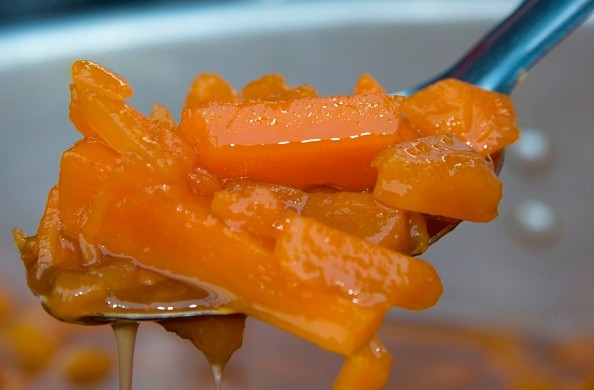Sweet potatoes, which are orange and starchy, are deliciously mashed, cut into fries or simply roasted whole.
But recent research has revealed the most effective method for converting sweet potatoes into gluten-free flours that are high in antioxidants and ideal for thickening or baking.
A more healthful, gluten-free flour
 (Photo : HELENE VALENZUELA/AFP via Getty Images)
(Photo : HELENE VALENZUELA/AFP via Getty Images)

Wheat flour has been used for tens of thousands of years and is unlikely to be phased out anytime soon.
Gluten proteins in wheat flour, however, can cause stomach pain, nausea, and even intestinal damage in those who are gluten intolerant or have celiac disease, as per ScienceDaily.
Several gluten-free options, such as those made from banana peels, almonds, and various grains, are either already available or in the works.
However, sweet potatoes are an up-and-coming contender, as the hearty tuber is packed with antioxidants and nutrients, as well as a slightly sweet flavor and a hint of color.
The best practices for processing the flour must be established before it can become a common ingredient in store-bought baked goods.
Though previous research has looked into a variety of parameters, including how potatoes are dried and milled, no one has determined how these different steps interact with one another to produce flours that are best suited for specific products.
As a result, Ofelia Rouzaud-Sández and colleagues wanted to see how different drying temperatures and grinding processes affected the properties of orange sweet potato flour.
To make their flour, the researchers dried orange sweet potatoes (Ipomoea batatas) at 122- or 176-degrees Fahrenheit and ground them once or twice.
They looked at a variety of parameters for each sample, comparing it to store-bought sweet potato flour and traditional wheat flour.
Grinding once, regardless of drying temperature, damaged just enough of the starch to make it suitable for fermented products such as gluten-free bread.
Grinding twice disrupted the crystallinity of the starch, producing thickening agents suitable for porridges or sauces.
When baked into a loaf of bread, the high-temperature-dried, single-ground sample outperformed both the store-bought version and wheat flour in terms of antioxidant capacity.
According to the researchers, these findings could help to broaden the applications of orange sweet potato flour for both home cooks and the packaged food industry.
Also Read: Sweetpotato Weevils' Favorite Color Switches When it Moves Indoors
The sweet potato market and its benefits
The global sweet potato flour market is expected to benefit from the ongoing health-consciousness trend, as per Persistence.
Sweet potato flour is versatile and contains more nutrients than traditional flour like wheat and soy, plus it is gluten-free and high in carbohydrates, vitamins, calories, and iron.
This makes it appealing to consumers, particularly professional athletes, and sportsmen who use it for quick energy and carbs.
As a result, manufacturers are expected to incorporate more sweet potato flour into their product offerings.
Sweet potato flour is quickly replacing wheat flour as the best alternative.
Manufacturers are promoting the product as an alternative to wheat flour for use in bakery products such as bread, cakes, and muffins, which can now be made entirely of sweet potato flour.
Furthermore, sweet potato flour is being promoted by manufacturers as flour that can be mixed with soy flour, wheat flour, rice flour, cassava flour, maize flour, and other ingredients to improve the taste and texture of finished products.
Organic food is a growing trend in the global food and beverage industry, as consumers become more aware of the impact of food on their health.
This increases the demand for healthy food and ingredients.
Manufacturers of food and beverage products seek organic ingredients and raw materials to diversify their product offerings.
Related article: This GMO is 8,000 Years Old and Completely Natural
© 2024 NatureWorldNews.com All rights reserved. Do not reproduce without permission.



![Climate Change is Reducing Dust Levels Worldwide as Arctic Temperature Warms [Study]](https://1471793142.rsc.cdn77.org/data/thumbs/full/70320/280/157/50/40/climate-change-is-reducing-dust-levels-worldwide-as-arctic-temperature-warms-study.jpg)

